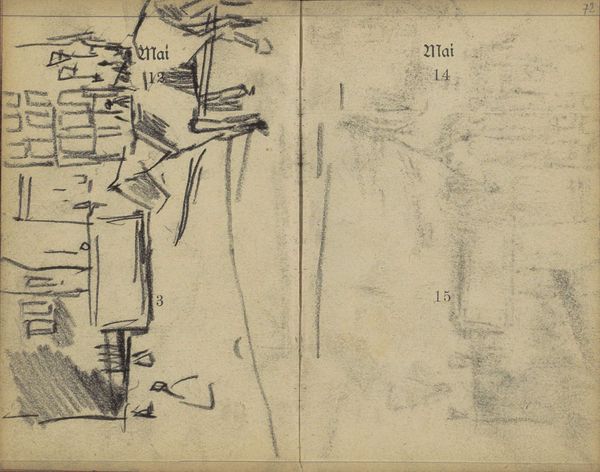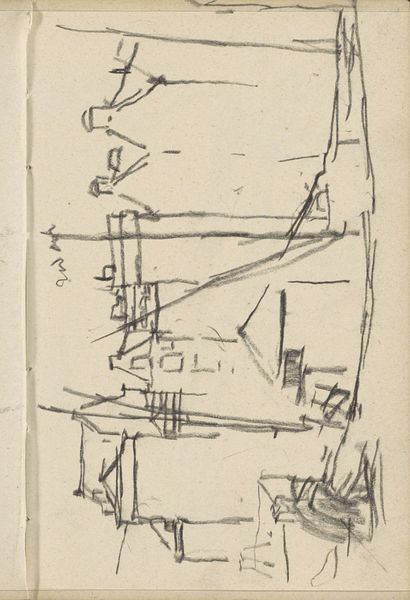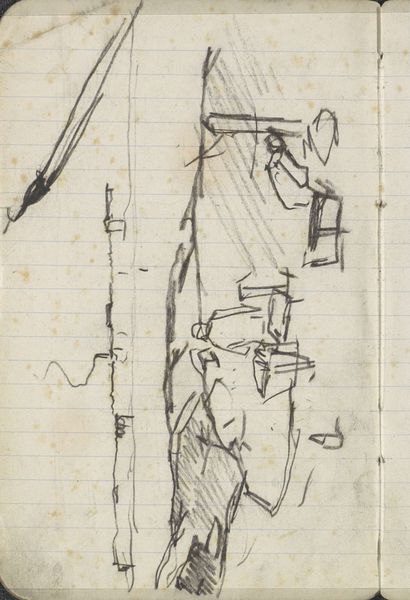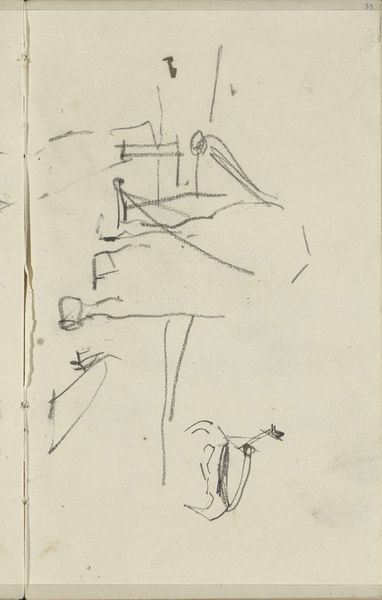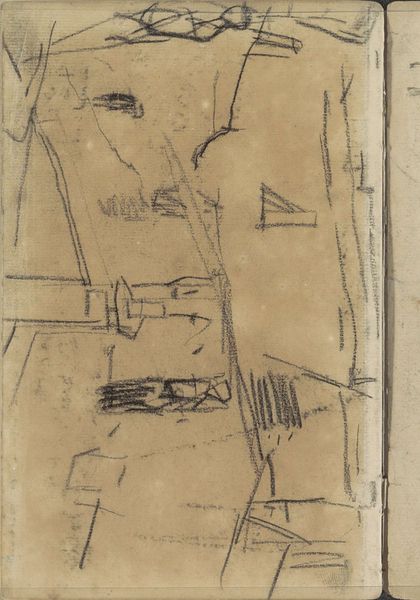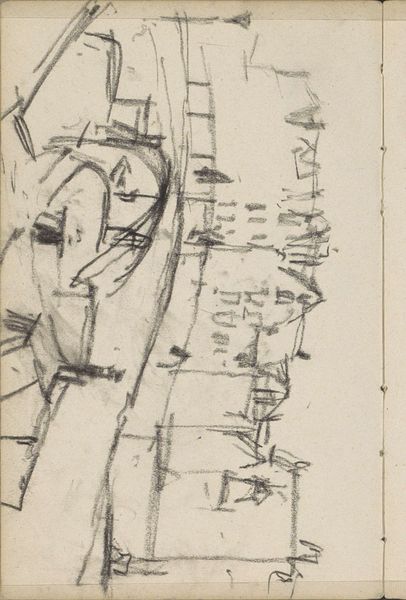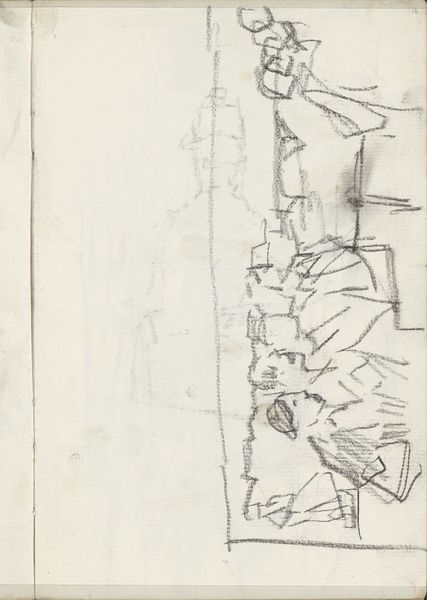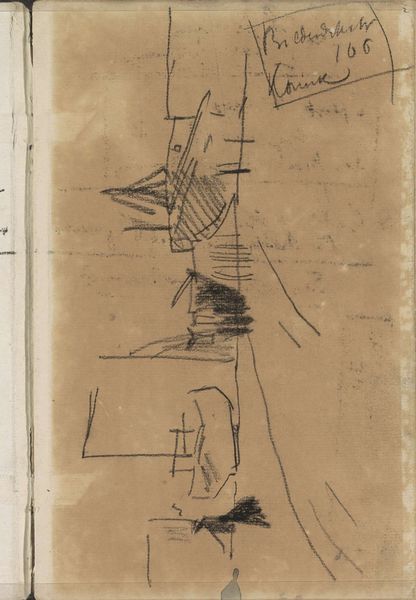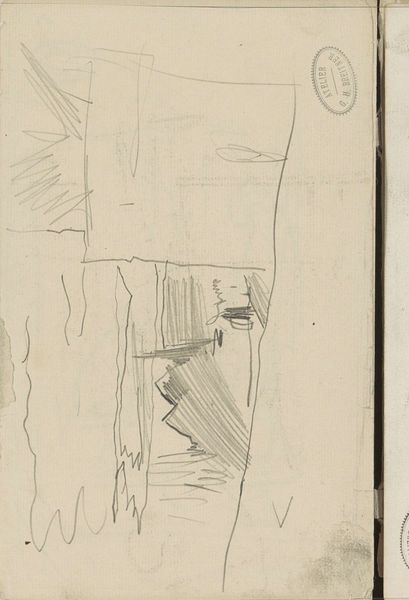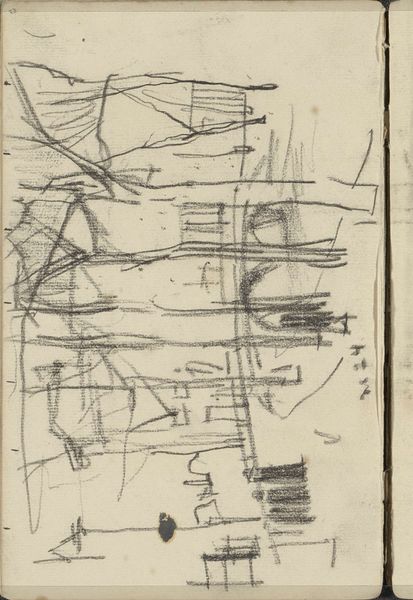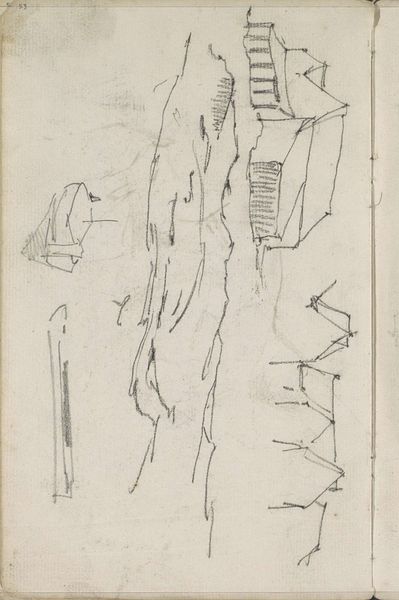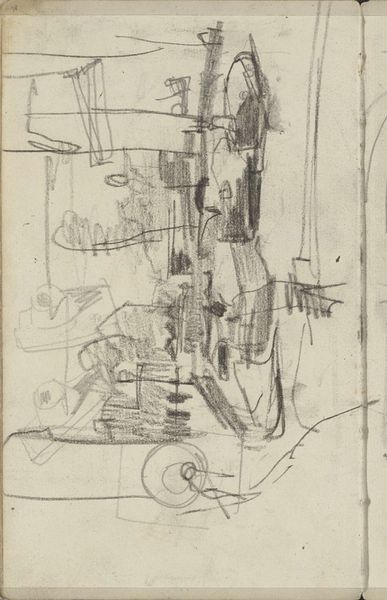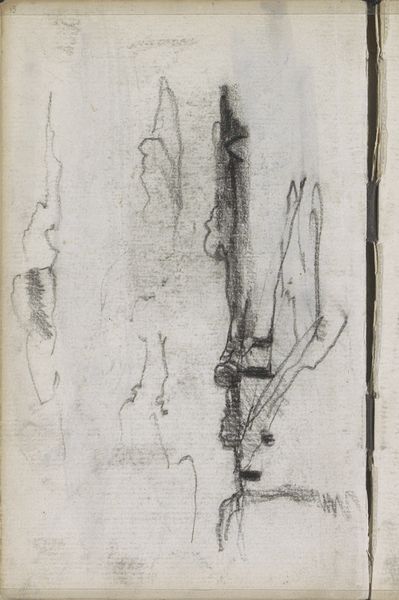
drawing, pencil
#
drawing
#
impressionism
#
landscape
#
pencil
#
park
Copyright: Rijks Museum: Open Domain
Curator: This drawing by George Hendrik Breitner, titled "View in Amsterdam, possibly the Oosterpark", was likely sketched between 1887 and 1891. It’s rendered in pencil. Editor: My first impression is one of spontaneity and a raw, unfinished quality. The composition feels fragmented. Curator: Absolutely. Breitner was fascinated by capturing the immediacy of modern urban life. This sketch reflects the rapid changes occurring in Amsterdam at the time, but the rapid sketch also seems evocative of a dreamscape. The sketchy rendering might indicate a quick capture of something meaningful. Do you notice figures interspersed that might suggest social conditions? Editor: Yes, there are definitely suggestions of human forms, very minimal, almost glyph-like. It reads as though he's prioritizing the skeletal structure of the urban landscape itself, using quick, assured lines. The marks convey depth even if they only use thin lines. He uses shadow to create this, and the way the park foliage meets the hard edge of buildings implies modernity encroaching on nature, literally erasing green space. Curator: A poignant tension, indicative of a societal shift. The lack of detail pushes the focus towards the general atmosphere. Amsterdam, emerging as a modern metropolis. It may capture a lost vision for progress as social disruption. What strikes you most about the materials used here? Editor: Well, the choice of pencil on paper emphasizes the ephemeral nature of the subject. It's not meant to be monumental or permanent, but fleeting—an observation, an impression registered in a moment. Curator: Indeed. It allows the image to remain open-ended, inviting viewers to project their own experiences of urban change. As for the drawing’s legacy, it reminds us that visual records of seemingly ordinary moments are culturally important as traces of social history. Editor: Precisely, and beyond that, Breitner’s mastery of line allows him to do so much with so little, forcing us to confront the power of suggestion in representation itself.
Comments
No comments
Be the first to comment and join the conversation on the ultimate creative platform.
